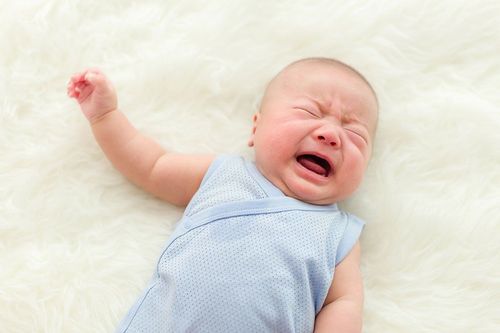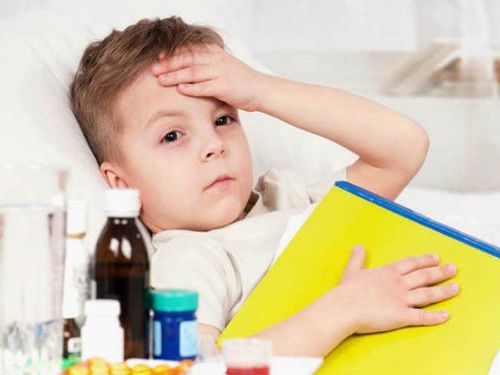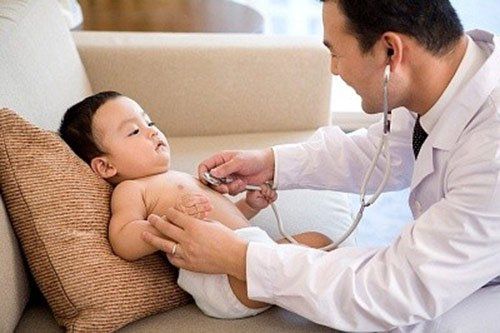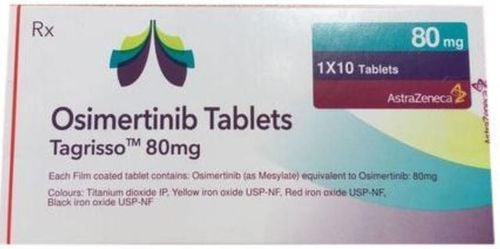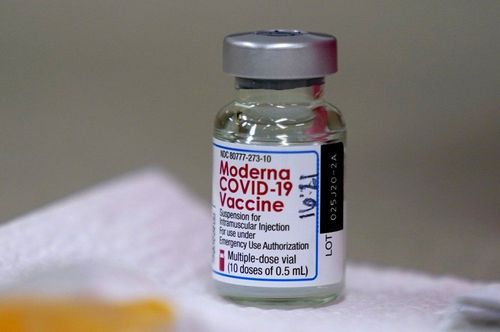This is an automatically translated article.
This article is professionally consulted by Master, Resident Doctor Dang Thi Ngoan - Pediatrician - Neonatologist - Department of Pediatrics - Neonatology - Vinmec Ha Long International Hospital.Newborns with pneumonia are quite dangerous condition. If not detected and treated early, pneumonia will cause health complications later for children. One of the typical signs of pneumonia in a newborn is rapid breathing.
1. How dangerous is rapid breathing in babies?
Symptoms of tachypnea are detected through counting the child's breathing, along with watching the chest move when the child breathes. Tachypnea is assessed as the clinical sign with the highest diagnostic value for pneumonia in children.
Symptoms of shortness of breath in children are defined by the World Health Organization as follows:
From 60 times / minute for children under 2 months From 50 times / minute for children 2 months - 12 months old From 40 times / minute with children 1-5 years old

Normally when inhaling and exhaling is counted as one breath. Parents need to pay attention to counting the child's breathing when the child is lying still, without exertion. For babies, count when they are not in a state of fear or fuss. A watch with a second hand can be used to count breathing and count within 1 minute, do not arbitrarily count quickly for 15 seconds and then multiply by 4 because the infant's breathing rhythm is irregular (with a pause in breathing). Therefore, if counting is not enough for 1 minute, then the assessment of breathing rate in 1 minute is not accurate.
Symptoms of tachypnea in infants aged 0-12 months are breathing rates of 60 breaths/minute or more. When counting breaths, pay attention to look at the baby's abdomen or chest. For infants under 2 months old, there are often irregular breathing rhythms, so if the first count shows that the breathing rate is greater than 60 times/minute, it should be counted again for the second time. If the result is still more than 60 times/minute, then there will be can identify a child with rapid breathing.
Tachypnea is a typical symptom of pneumonia common in infants and children 1-3 years old. For children over 3 years of age, the sensitivity of the signs of tachypnea is relatively low. In children under 1 year of age, breathing rates above 70 breaths per minute are usually symptoms of severe pneumonia.
Trắc nghiệm: các chỉ số cần chú ý về sự phát triển thể chất của trẻ
Chiều cao, cân nặng của bé ở từng giai đoạn nên là bao nhiêu là bình thường, bao nhiêu là bất thường? Cùng ThS.BS Ma Văn Thấm điểm lại xem bạn đã nắm được các chỉ số phát triển thể chất của bé chưa nhé!The following content is prepared under supervision of Thạc sĩ, Bác sĩ y khoa, Ma Văn Thấm , Nhi , Phòng khám Đa khoa Quốc tế Vinmec Dương Đông(Phú Quốc)
2. Other manifestations of pneumonia in infants
2.1 Chest Indrawing Along with shortness of breath in children, parents can easily recognize signs of chest indrawing in children. Normally when a child inhales, air enters the lungs causing the chest cavity to expand. But if the child breathes in and finds the lower ribcage at the junction with the chest is concave, it is an abnormal sign of symptoms of pneumonia in the child.
Specifically, thoracic indrawing is a sign that occurs when the lower part of the ribcage at the border between the chest and abdomen is concave when the child breathes in. But if there is only evidence of retraction of the intercostal spaces, or above the clavicle, it is not a sign of thoracic indrawing.
Infants under 2 months of age with mild signs of chest indrawing are normal because the chest wall is still soft. But if there are signs of severe, deep retraction, it is a sign of severe pneumonia in the newborn.
2.2 Snoring, wheezing A wheezing sound occurs in children with laryngitis, the epiglottis is edematous, causing constriction, narrowing, and obstructing ventilation in the lungs. Constriction and obstruction in the small bronchi cause the baby's breathing to wheeze. Parents need to close the child's mouth to listen, and at the same time observe the child's breathing, to be able to detect signs of wheezing and hissing sound while breathing.

In addition, children with pneumonia will have other accompanying signs such as high fever, always wheezing; The clinical manifestations can be seen as the baby's nose flaps up and down, groaning, poor suckling, irritability... These manifestations can vary depending on the age of the child.
In some cases, children have symptoms such as cough, runny nose, mouth breathing, fever... and there are no signs of rapid breathing, chest indrawing, stridor, it is likely that the child does not have pneumonia, but only suffers from pneumonia. common cold.
In general, to detect pneumonia, the main symptoms parents need to look out for in children are rapid breathing, chest indrawing, stridor, wheezing. Children need to go to the hospital immediately if they have these symptoms for timely treatment of pneumonia. If parents are subjective with these manifestations of the child, especially for the newborn, it will cause severe pneumonia, difficult to treat definitively and cause dangerous and persistent complications for the child's health in the future. In particular, parents should also pay attention to vaccinate their children on time to improve resistance to this disease.
Newborn pneumonia if not treated in time will cause many serious complications such as respiratory failure and even death. Therefore, as soon as the child appears to have rapid breathing, parents should take the baby to a medical facility immediately to be examined and treated by a pediatrician.
Vinmec International General Hospital is one of the leading hospitals in pediatrics, gathering a team of highly qualified, experienced doctors and nurses who are regularly and continuously trained with specialists. international leading pediatric family. The Pediatrics Department at Vinmec is also one of the few hospitals that has a full range of specialists in respiratory, digestive, neurological, cardiovascular, psychology, nutrition, hepatobiliary.... and has the support. of other specialized specialties, typically Regenerative Medicine in the treatment and rehabilitation of children with autism and cerebral palsy. Therefore, as soon as you see your baby showing signs of rapid breathing, book an appointment for your baby at the website for service.
Please dial HOTLINE for more information or register for an appointment HERE. Download MyVinmec app to make appointments faster and to manage your bookings easily.






